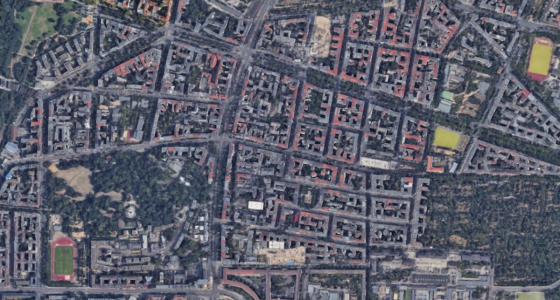The 'Big Error' in This Aussie City's Housing Plan That Could Affect Your Home's Value!
By
- Replies 2
As we delve into the intricacies of urban development and the quest for affordable housing, a recent announcement from Victoria's state government has sparked a wave of optimism among millennials aspiring to own a home. The government's bold initiative aims to simplify building homes by cutting through the bureaucratic red tape associated with subdivisions, expanding the urban fringe, and allowing high-rise buildings to sprout around train stations. As Premier Jacinta Allan passionately expressed, this plan is a fight she will take on for the younger generation's future.
However, amidst the fanfare of this progressive move, a leading urban planning expert has sounded the alarm, pointing out a 'big error' that could have far-reaching consequences. Professor Sarah Bekessy, a respected voice in sustainability and urban planning at RMIT and a lead councillor of the Biodiversity Council, has raised concerns that the new property announcements overlook critical environmental considerations.
In an interview with Yahoo News, Professor Bekessy highlighted the absence of nature in the government's housing discourse. She emphasised the undeniable link between human health, well-being, and access to natural spaces. With many of Australia's threatened species found in and around urban areas, incorporating nature into urban planning isn't just a nice-to-have; it's necessary for our cities' ecological and social fabric.
Melbourne, often lauded for its affordability compared to Sydney, where millennials without family wealth are priced out of the market, is at a crossroads. Once known as 'the garden state,' the city risks compromising its liveability and green identity in pursuit of housing accessibility. But does it have to be a zero-sum game?
Professor Bekessy believes there are alternative solutions that can harmonise urban development with environmental stewardship. She points to Berlin's urban model, where mid-rise buildings with communal courtyards offer both density and quality of life. This approach fosters community interaction and preserves green spaces, vital for wildlife and human residents.
The loss of biodiversity isn't just a theoretical concern. Melbourne has already witnessed the disappearance of kookaburras due to the destruction of their nesting habitats. Further encroachment on green spaces could cause common species like wattlebirds, magpies, and lorikeets to follow suit. Bekessy argues for a built environment that supports biodiversity, suggesting low-rise apartment buildings with shared gardens as a preferable alternative to townhouses that often lack greenery.
The environmental implications of reduced green space extend beyond the loss of wildlife. Cities with less vegetation face the 'urban heat island' effect, where concrete and asphalt absorb and radiate heat, leading to sweltering conditions and increased energy costs for cooling. Bekessy warns that without a commitment to an urban forest, cities could become intolerable under the pressures of climate change.
Moreover, the push for high-rise development raises concerns about energy inefficiency and a disconnect from nature. Residents perched at towering buildings may be alienated from the natural world, with little opportunity to engage with their surroundings.
As we consider the future of Melbourne's housing market, it's clear that the 'big error' in the current plan isn't just about the immediate impact on property values. It's about the long-term implications for our environment, communities, and connection to the natural world. The challenge lies in finding a balance that accommodates the need for affordable housing while preserving our cities' unique character and ecological health.
 This issue hits close to home for our readers at the Seniors Discount Club. Many of you have seen the evolution of Australian cities over the years and understand the importance of maintaining a connection to nature for future generations. We invite you to share your thoughts and experiences on this topic. How do you think urban development should proceed to ensure both affordable housing and environmental sustainability? Join the conversation and let us know in the comments below!
This issue hits close to home for our readers at the Seniors Discount Club. Many of you have seen the evolution of Australian cities over the years and understand the importance of maintaining a connection to nature for future generations. We invite you to share your thoughts and experiences on this topic. How do you think urban development should proceed to ensure both affordable housing and environmental sustainability? Join the conversation and let us know in the comments below!
However, amidst the fanfare of this progressive move, a leading urban planning expert has sounded the alarm, pointing out a 'big error' that could have far-reaching consequences. Professor Sarah Bekessy, a respected voice in sustainability and urban planning at RMIT and a lead councillor of the Biodiversity Council, has raised concerns that the new property announcements overlook critical environmental considerations.
In an interview with Yahoo News, Professor Bekessy highlighted the absence of nature in the government's housing discourse. She emphasised the undeniable link between human health, well-being, and access to natural spaces. With many of Australia's threatened species found in and around urban areas, incorporating nature into urban planning isn't just a nice-to-have; it's necessary for our cities' ecological and social fabric.
Melbourne, often lauded for its affordability compared to Sydney, where millennials without family wealth are priced out of the market, is at a crossroads. Once known as 'the garden state,' the city risks compromising its liveability and green identity in pursuit of housing accessibility. But does it have to be a zero-sum game?
Professor Bekessy believes there are alternative solutions that can harmonise urban development with environmental stewardship. She points to Berlin's urban model, where mid-rise buildings with communal courtyards offer both density and quality of life. This approach fosters community interaction and preserves green spaces, vital for wildlife and human residents.
The loss of biodiversity isn't just a theoretical concern. Melbourne has already witnessed the disappearance of kookaburras due to the destruction of their nesting habitats. Further encroachment on green spaces could cause common species like wattlebirds, magpies, and lorikeets to follow suit. Bekessy argues for a built environment that supports biodiversity, suggesting low-rise apartment buildings with shared gardens as a preferable alternative to townhouses that often lack greenery.
The environmental implications of reduced green space extend beyond the loss of wildlife. Cities with less vegetation face the 'urban heat island' effect, where concrete and asphalt absorb and radiate heat, leading to sweltering conditions and increased energy costs for cooling. Bekessy warns that without a commitment to an urban forest, cities could become intolerable under the pressures of climate change.
Moreover, the push for high-rise development raises concerns about energy inefficiency and a disconnect from nature. Residents perched at towering buildings may be alienated from the natural world, with little opportunity to engage with their surroundings.
As we consider the future of Melbourne's housing market, it's clear that the 'big error' in the current plan isn't just about the immediate impact on property values. It's about the long-term implications for our environment, communities, and connection to the natural world. The challenge lies in finding a balance that accommodates the need for affordable housing while preserving our cities' unique character and ecological health.
Key Takeaways
- A leading planning expert has identified a major flaw in Victoria's new housing plan, which aims to increase homeownership among millennials.
- The plan includes reducing red tape for subdivisions, expanding urban fringe areas, and allowing high-rise developments near train stations, but it may negatively impact nature, climate, and wildlife.
- Professor Sarah Bekessy from RMIT, a sustainability and urban planning expert, advocates for an inclusive discussion on biodiversity when considering housing policies, citing Berlin's approach as a model for balancing density and green space.
- Bekessy warns against losing green spaces and backyards, emphasising their importance in creating a cooler city environment and maintaining connections with nature, community, and biodiversity.








